Tiles for the kitchen on the floor: types, designs and tips for choosing
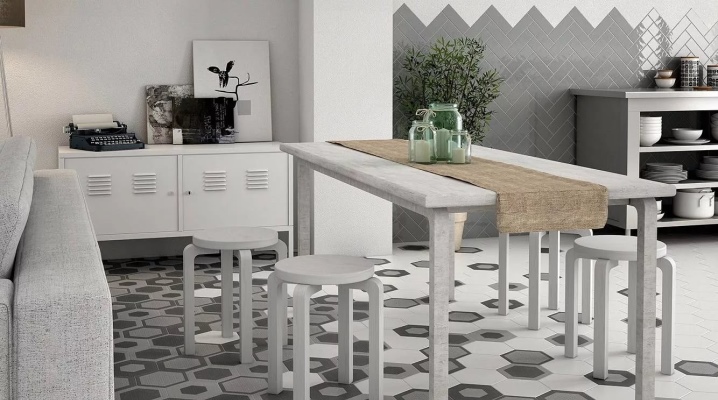
The tile is widely used as a floor covering. This material has many textures, sizes, colors and designs, which is why it is increasingly preferred when decorating kitchen floors. Consider what types of tiles exist, their features, dimensions and other characteristics.
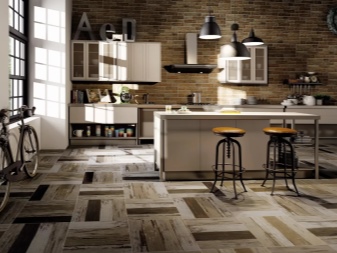
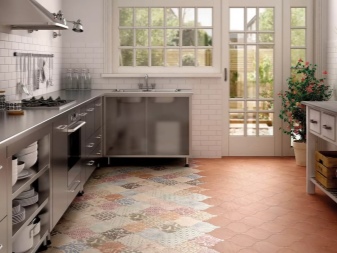
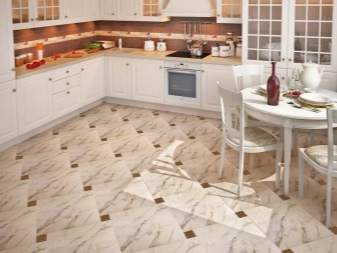
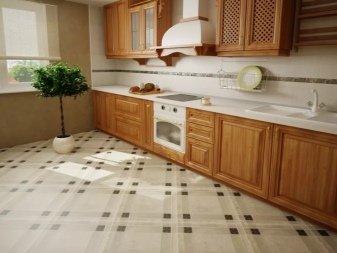
Views
Floor tiles for the kitchen are made of porcelain stoneware, ceramics (aka tile), quartz vinyl or PVC. To understand which cladding to give preference to, you need to study the features, advantages and disadvantages of each type.
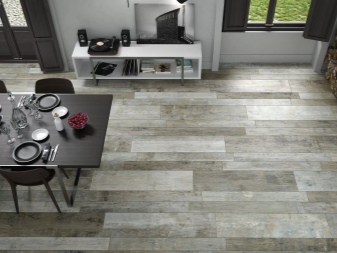
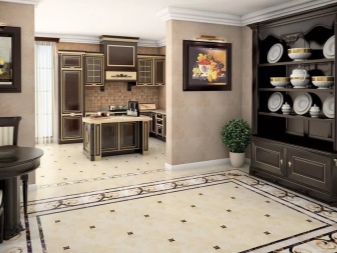
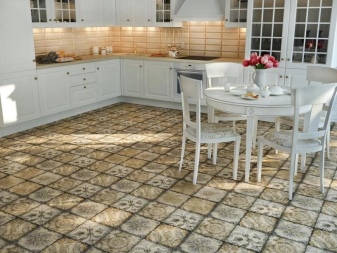

Ceramic
Tiled or ceramic tiles are a convenient and practical floor covering that is sold in a wide price segment. Due to the strong "spread" of cost, it is possible to choose an option for your pocket. Of all types of tiles, ceramic has the best price-quality ratio. Other advantages of tiles include the following.
- High strength characteristics. Tiled cladding is able to withstand heavy falls and impacts.
- Easy and convenient maintenance... The tiles lend themselves well to washing and cleaning. It is allowed to remove contaminants from it using various agents (even with high chemical aggressiveness). Easy cleaning is an important advantage for the coating used in the kitchen.
- Long service life. Subject to the rules of installation and operation, tiles can be used for at least 10-15 years. In addition, the durability of ceramic tiles is determined by their resistance to mechanical abrasion and wear.
- Resistant to moisture. High levels of moisture resistance allow the use of tiles in rooms where conditions of high humidity are observed.
- Fire resistance. When exposed to a flame, the ceramic will not ignite or melt. At excessively high temperatures, the tile retains its appearance (does not deform).
- UV resistant. There is no need to be afraid that when exposed to sunlight penetrating through the window, the cladding will fade.
- Hypoallergenic and environmentally friendly... The material does not exude toxins harmful to health.
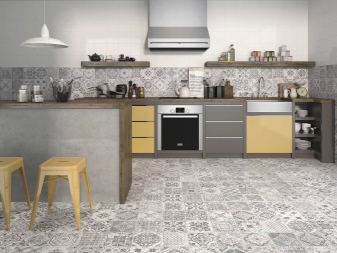
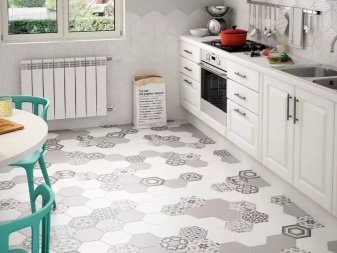
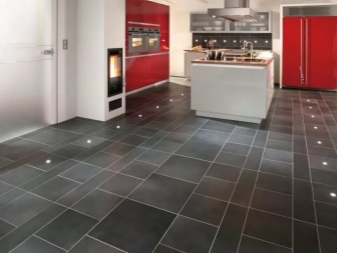
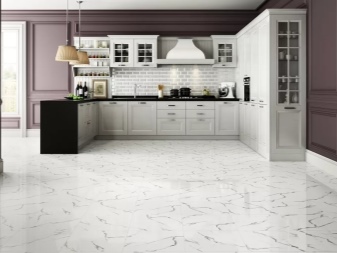
The advantage also includes extensive range of tiles... For example, tiles can have different shades, be monochromatic or patterned, have a smooth or rough surface, and be produced in various formats. A wide range of solutions will allow the buyer to choose an option for any type of interior.
Ceramics has some drawbacks, most of which are conditional. The main disadvantage is the difficult and lengthy installation. The process involves the perfect leveling of the floor and the complete elimination of air voids.
The work is painstaking and long, however, if you neglect the recommendations, the tile will not last long.
Other disadvantages of the material include its coldness, slipperiness and poor sound insulation. These disadvantages are easy to eliminate. For example, the surface will become warmer if you install a "warm floor" system. And poor sound insulation is solved by using soundproofing material. However, to get rid of the shortcomings, additional financial investments will be required.

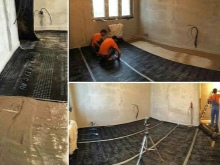
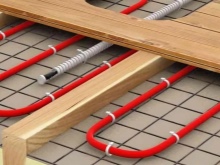
Porcelain stoneware
Porcelain stoneware, unlike tiles, is a more expensive material. Due to its high cost, it is in less demand. Features of this cladding.
- Exceptional strength and toughness (The indicators of these parameters are close to the characteristics of a diamond).
- Long service life without loss of external perfection. Even with intensive use, the tiles do not form scratches, small abrasions and other mechanical defects.
- Low moisture absorption coefficientprovided by the absence of air voids inside the material.
- Differs in high inertness to acidic and alkaline substances. Due to this feature, chemically aggressive agents can be used when cleaning.
- Resistance to change in appearance... The material does not deform when exposed to temperature and fire. It retains the brightness of colors and color saturation when exposed to direct sunlight.
- A wide variety of textures... Depending on the production technology, porcelain stoneware can be structural, satin, glazed, lapped, matte or polished.
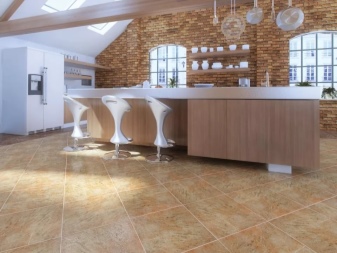
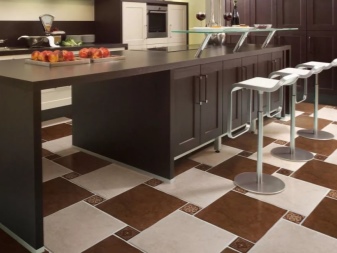
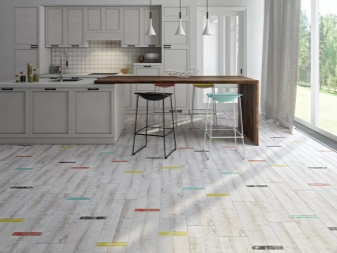
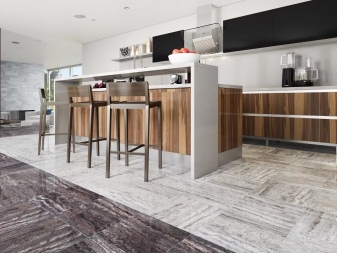
Porcelain stoneware tiles are fragile (before installation) and weighty. These features make the transport of material difficult, since there are risks of damage during loading and unloading operations.
In addition, consumers of porcelain stoneware note the complexity of its cutting and processing of edges, as well as difficult installation "alone".

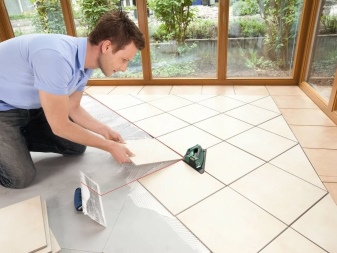
Quartz vinyl
Multilayer material that combines the advantages of linoleum flooring and tiles. Quartz vinyl tile consists of:
- from the bottom thick vinyl base layer, which gives the product rigidity;
- fiberglass mesh, which performs the function of reinforcement (does not allow deformation of the film);
- quartz vinyl;
- decorative shell;
- a protective polyurethane layer that protects the coating from abrasion and various mechanical influences.
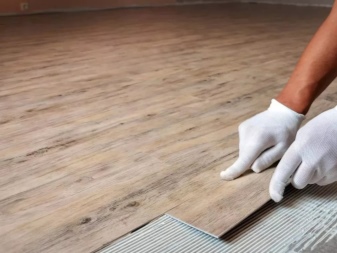
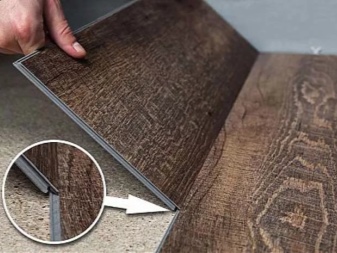
Quartz vinyl tiles are one of the best solutions for kitchen flooring. Unlike the previous ones, this material is considered warm. Thanks to this feature, the buyer does not have to install floor heating systems. Other benefits of quartz vinyl coatings include:
- durability - the service life declared by the manufacturer is at least 15 years;
- environmental friendliness - when heated, the coating does not emit toxins, so it can be used in conjunction with underfloor heating systems;
- moisture resistance;
- lack of slipping;
- resistance to various power loads and mechanical damage.
It is pleasant to walk on such a surface with bare feet - it evokes pleasant tactile sensations and warmth.
Quartz vinyl tiles do not emit extraneous sounds and noises when walking, which determines its high performance.


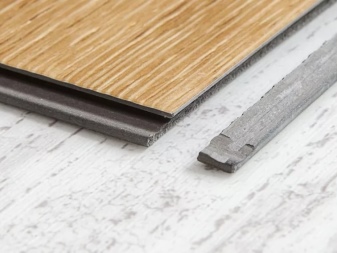
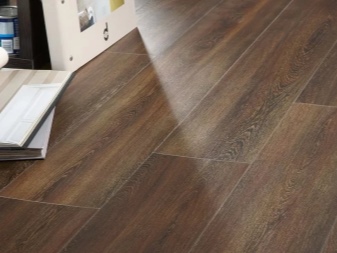
The disadvantages of the material include high cost, large weight, complexity of installation. To exclude "wavy" laying, the base on which the tiles will lie must be perfectly leveled.
There are few well-known manufacturers on the market that produce high-quality quartz vinyl tiles for flooring. Products of unscrupulous manufacturers offering low quality coatings are more common on sale. Materials that are not produced according to technology delaminate prematurely, losing their aesthetics.
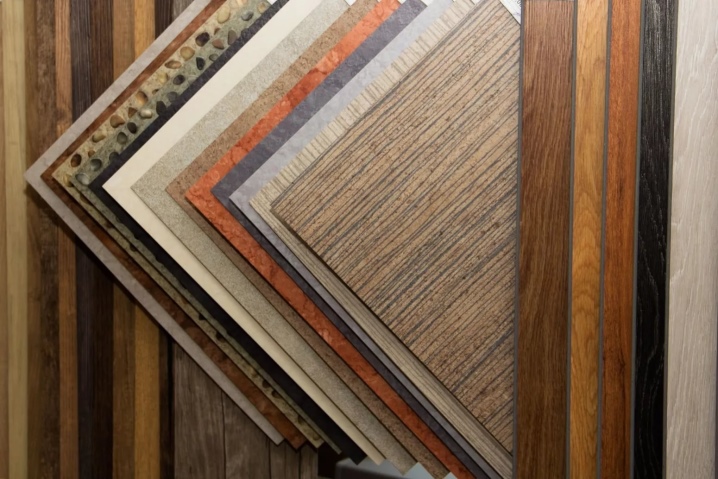
Polyvinyl chloride (PVC)
PVC tiles are a relatively new floor covering. In its manufacture, the same materials are used as in the production of linoleum. There are two types of PVC tiles:
- single layer (homogeneous);
- multilayer (heterogeneous).
The first has a single layer. The picture of a homogeneous product "runs" through the entire thickness of the coating, so that the pattern will not be erased even during prolonged and intensive use. However, the choice of patterns on single-layer materials is scarce.
Heterogeneous veneer consists of several layers. The main ones are decorative and protective. The first is responsible for the aesthetic qualities of the tiles, the second determines the durability of the coating.
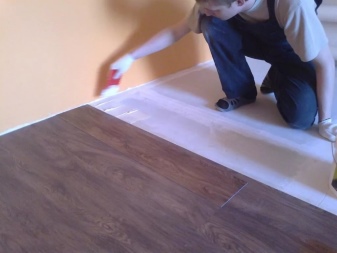
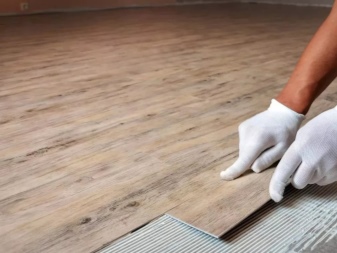
PVC products for floor finishing have the following advantages.
- Long service life, due to which they can be installed in rooms with high traffic.
- Easy transportation due to the low weight of the material.
- Good resistance to excessive force loads. You can install heavy pieces of furniture on the cover and not be afraid that it will sell out.
- Resistant to alkaline and acidic agents, temperature extremes, unstable humidity.
- Elasticity, due to which the coating can bend and not break.
- Excellent sound and heat insulation qualities. Thanks to these features, the consumer does not have to install a "warm floor" and provide an additional soundproofing layer.
- Resistance to the emergence and development of fungus, mold.
- Unpretentious care.
- A rich choice. PVC tiles have various colors, they can imitate natural wood, greenery, marble. Depending on the type, the products can be installed on glue, glue base or mounted thanks to the tongue-and-groove system.

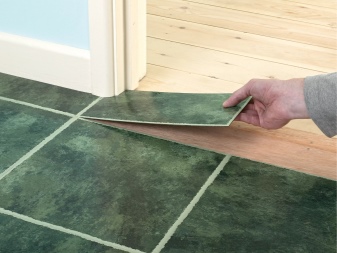
PVC flooring is made of synthetic materials, but at the same time it does not emit harmful substances during operation. All toxic components are bound. Their release into the environment is possible only when the material is ignited.
PVC tiles have some disadvantages. The main one is the fear of direct sunlight. When exposed to ultraviolet light, the flooring loses its brightness, becomes dull and faded. Other disadvantages include the need for thorough preparatory work before installing the cladding.
If you neglect this rule, the base may have pits, bumps and other defects. Due to unscrupulous preparation, there are great risks of peeling off the tiles.
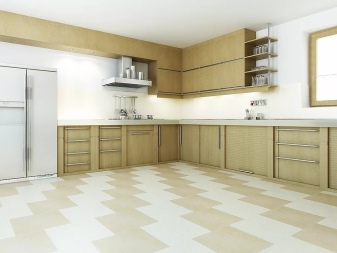
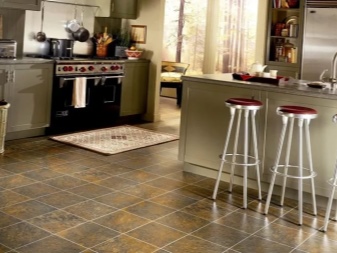
Dimensions (edit)
Floor tiles, regardless of the type, have different sizes. Most often, ceramic and porcelain stoneware materials are produced in the form of a square. They can have dimensions of 10x10 cm, 20x20, 30x30, etc. The most popular are tiles with dimensions of 30x30, 50x50 and 60x60 cm.
It is worth considering that the actual size of the tiles may differ slightly from the one declared by the manufacturer. The difference is small. Usually it is no more than 6 mm. This feature is due to some of the nuances of production technology. Most often, the difference in the real and declared by the manufacturer sizes is found in the budget cladding of Russian production.
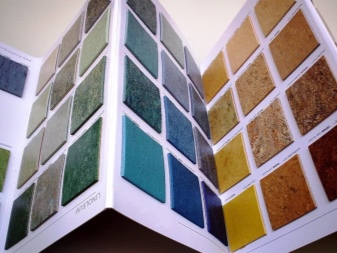
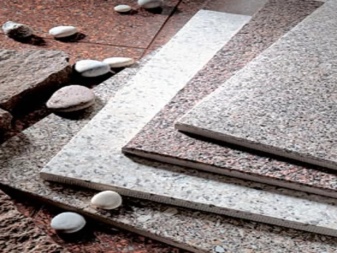
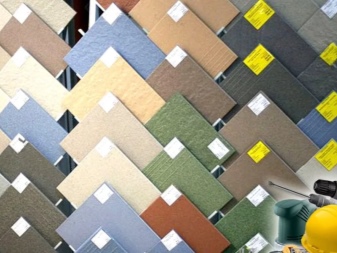
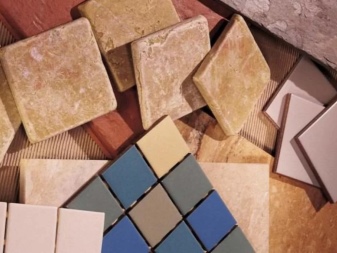
Quartz vinyl and PVC wood-like tiles can be produced not in the form of squares, but in the form of a rectangle. Thanks to this format, the material imitates a floor or parquet board. Popular sizes of such products:
- 15x45;
- 15x60;
- 20x60.
In addition, any tiles can have different thicknesses.
The higher this indicator, the more reliable and durable the coating will be. Basically, the thickness of the floor cladding is in the range from 6.5 to 11 mm.

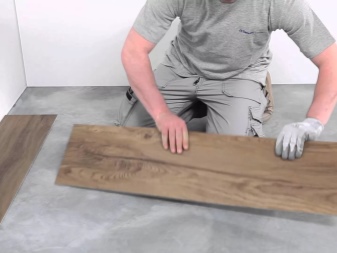
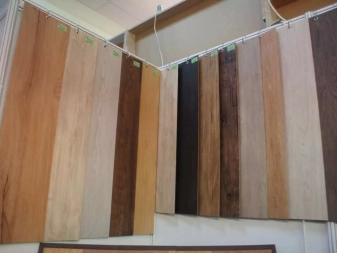
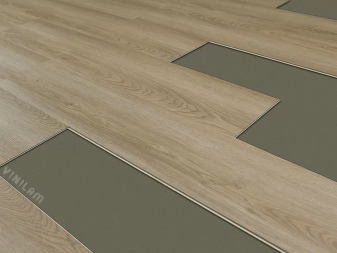
Design
Any type of tile has a wide range of colors. The choice of this or that color of the material will depend on the personal preferences of the buyer, his financial capabilities, the characteristics of the room being finished.
Do not forget that in the interior of small kitchens, flooring of light colors will be advantageous. For small rooms, it is better to choose white, gray or beige glossy tiles. Acquisition of cladding in pastel and walnut shades will be successful. Light flooring will help to visually expand and transform the space. In addition, light-colored tiles are practical. On such a floor, stains from washing floors, crumbs and various contaminants typical for a kitchen will be almost invisible.
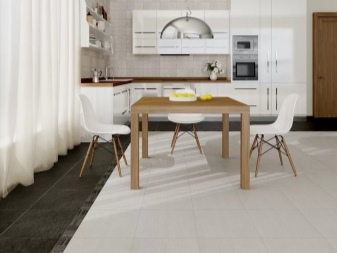

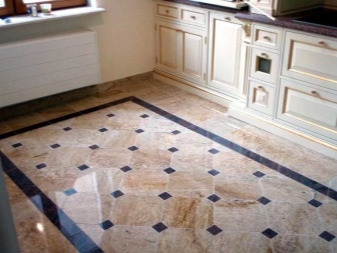
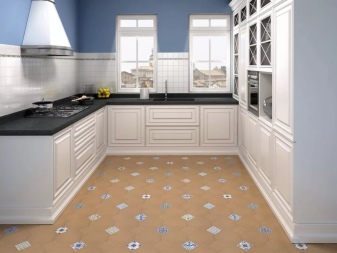
In addition to light, manufacturers offer dark tiles. The cool dark palette is a bold design choice. However, it is not recommended to finish the floor with completely dark tiles. It will be successful to "dilute" it with a monochromatic light cladding, finishing with patterns and drawings.
The combined installation method is relevant for any interiors of premises.
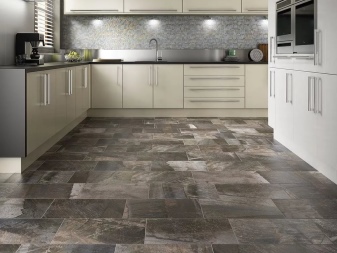
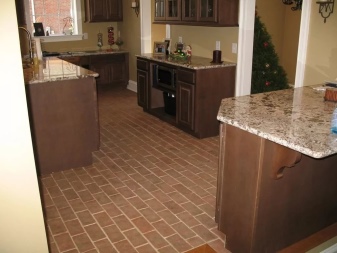
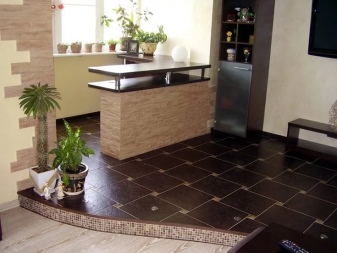
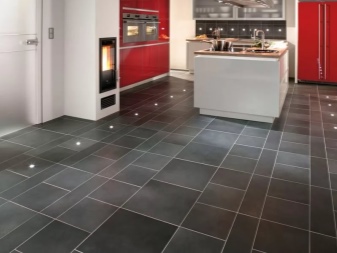
Tile designs can be more than just plain colors. Often there is a cladding, stylized:
- wood grain (ideal for classic and industrial styles);
- stone;
- carpet flooring;
- metal;
- textile;
- may have a pattern or patterns.
In addition, a new trend is considered to be finishing the floor in the kitchen with 3D decking. Tiles with a decor in the form of a three-dimensional picture looks elegant and stylish. It allows you to create a unique design in any room.
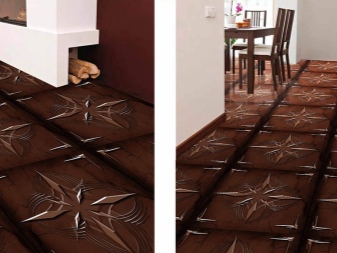
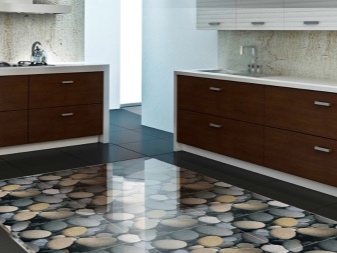
Manufacturers
When choosing a tile, it is important to decide on a manufacturer. Materials for floor and wall cladding from domestic and foreign manufacturers are widely represented on the market.
The most popular Russian-made tiles include Kerama Marazzi products. The manufacturer offers more than 2000 types of cladding. The products are in the middle and low price segment and have the best value for money. The brand's collections are constantly replenished with tiles with new designs. The advantages of Kerama Marazzi products include:
- extensive assortment;
- excellent strength indicators;
- reliability and durability of the cladding;
- original and non-standard design solutions.
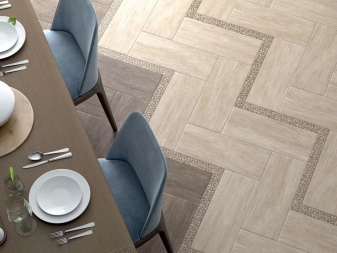
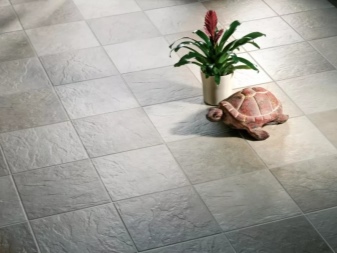
Popular domestic manufacturers of tiles for interior decoration include the following companies:
- "Nephrite-Ceramics";
- "Falcon";
- Uralkeramika.
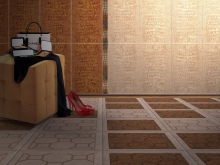
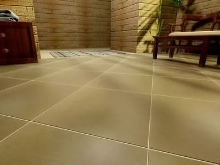
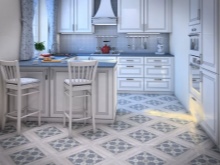
Imported cladding is also in great demand. The most popular finishing materials of the company Monopole Ceramica (Spain). The manufacturer offers 33 collections of ceramic tiles with various patterns, ornaments, made in different colors. All materials are made of red clay, which gains strength and reliability during the production process.

If financial possibilities permit, you can purchase tiles of the following brands: Azteca (Spanish production), Love Ceramic Tiles (Portuguese manufacturer), Alta Ceramika (Italian tiles). The choice of finishing tile materials for the kitchen is great. Various manufacturers offer cladding with different textures, thousands of shades, patterns and styles. However, when choosing a tile, you should not focus only on its appearance.
It is worth knowing what to look for in order for the flooring to serve for a long time without losing aesthetics.
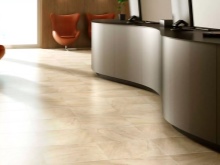
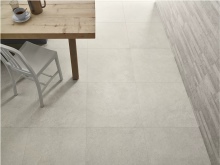

Selection criteria
The question of which tile is better to choose for the kitchen is of interest to everyone who is going to do cosmetic repairs. Before buying, it is important to learn more about the technical parameters of the facing material. These characteristics will determine how long the flooring will last. If you hurry and make the wrong choice, the finish can quickly wear out, become frayed and cracked.
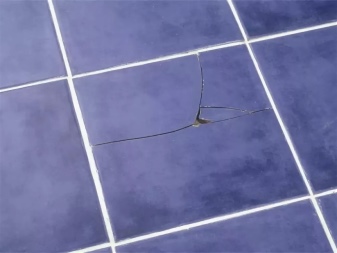
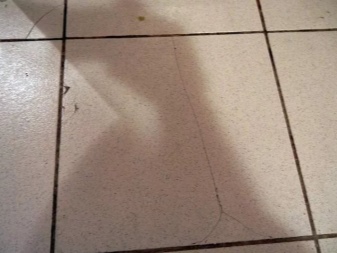
The main technical parameters of the tile, which you need to pay attention to in the first place.
- Wear rate... This indicator determines the PEI index. Depending on the class, the products can have a degree of wear from 1 to 5. The best choice for a kitchen-living room is a cladding that has a class 3 or 4.
- Resistance to aggressive chemicals. For the kitchen, it is recommended to give preference to materials that have class A or AA. They have a specialized dirt-repellent layer on the surface. Such tiles will be easy to clean and maintain their external perfection when using various household chemicals.
- Slip resistant. It is best to purchase products with a coefficient of 0.75 or more. Smooth glazed materials should not be used. When wet, they slide very much, which is why they are classified as the most traumatic.
- Strength. Determined by the Mohs scale. For finishing the kitchen floor, tiles with a strength of 5 or 6 points are ideal.
Before purchasing a tile, it is important to inquire about quality and hygiene certificates. Such documentation will testify to the safety of finishing materials and their high quality.
See the secrets of choosing ceramic tiles for the floor below.








The comment was sent successfully.